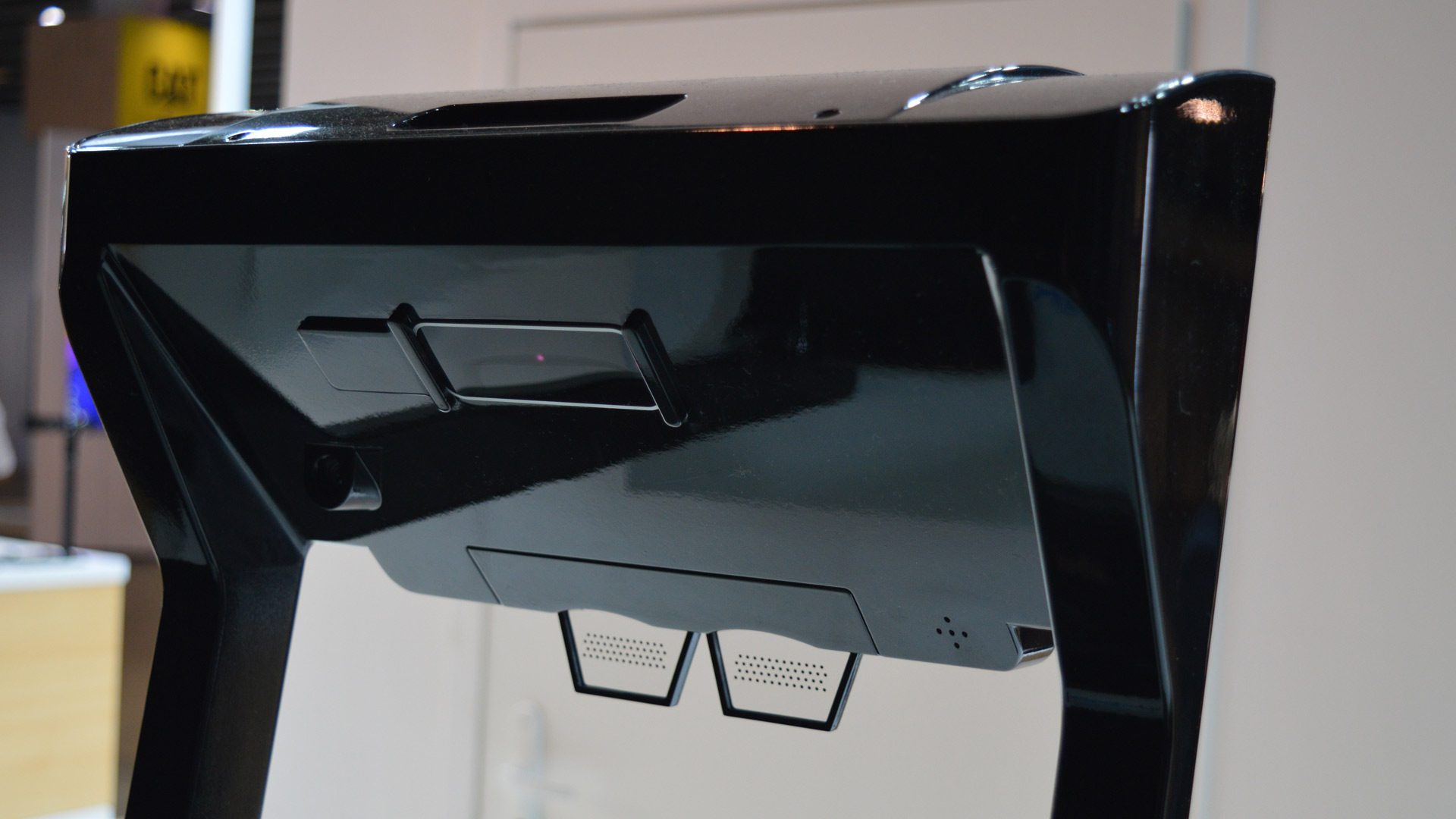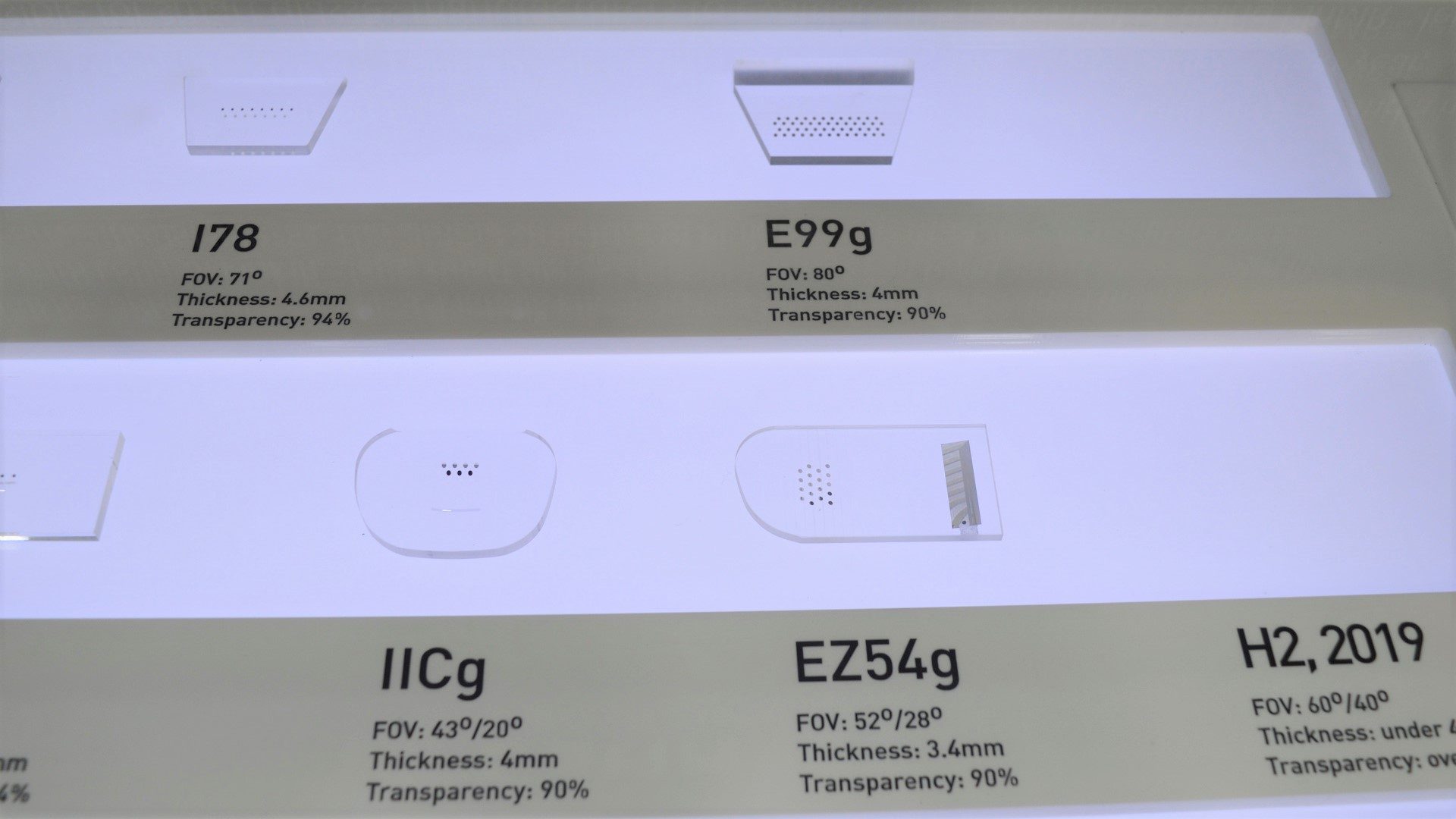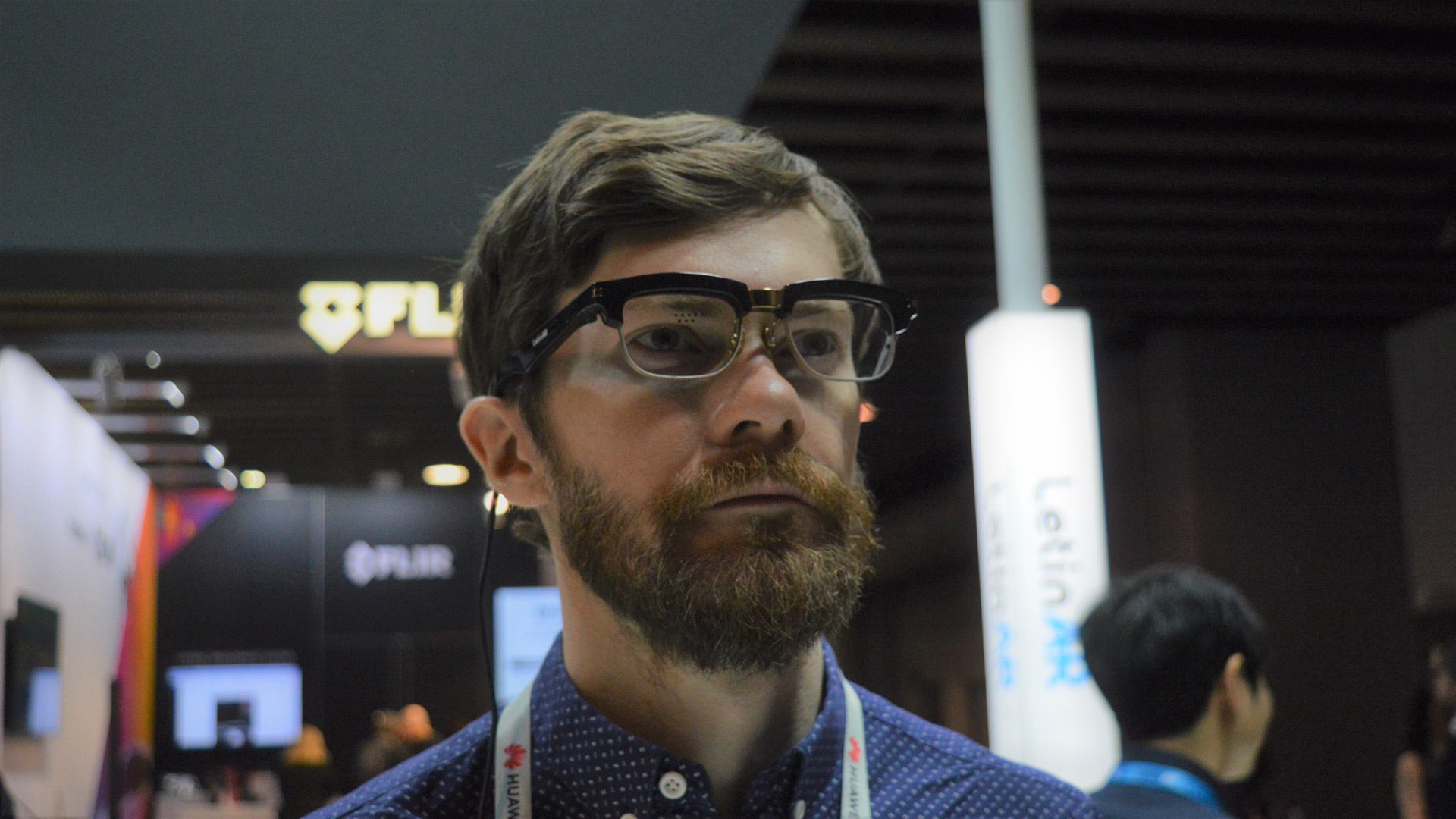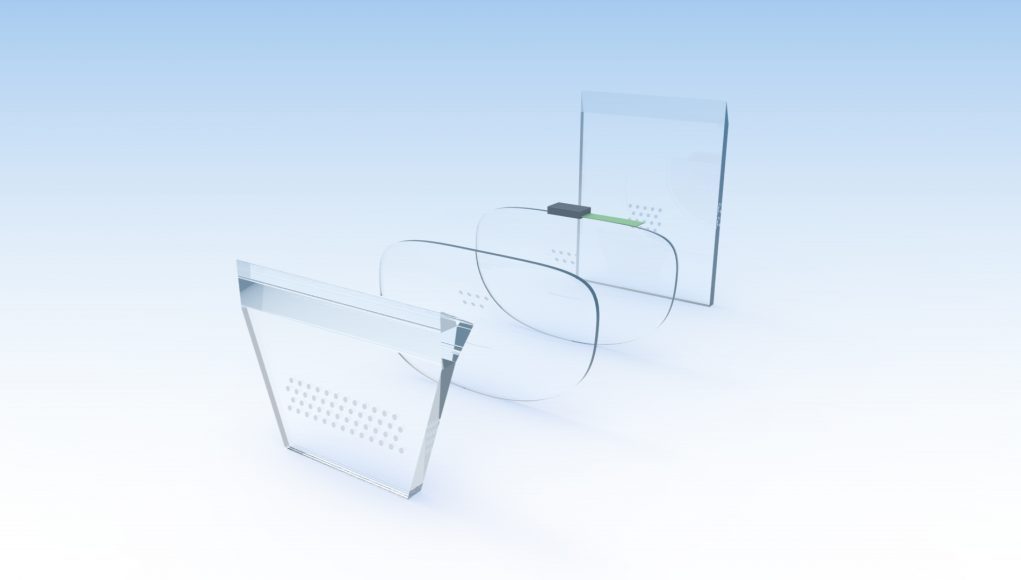LetinAR, a Korea-based startup developing optical solutions for AR headsets and smartglasses, showed off a new implementation of their ‘pin mirror’ optical tech at Mobile World Congress (MWC) this week, bringing a sharp image quality, a large range of focal depth, and a field of view (FOV) that rivals many of the bigger players who instead use waveguide-based optics.
Dubbing their optics ‘PinMR’, the company develops a number of lens configurations featuring small pinhole-sized mirrors oriented to reflect images from displays (both micro and larger formats) to the user’s eye.
The company’s latest product demo, which they call PinMR “8K”, sources imagery from two 5-inch 4K LCD displays held within a fixed viewing frame. Questionable branding aside (you only see a 4K stereoscopic image), LetinAR told me the “8K” demo was created specifically to show off the boundaries of what their optical tech was capable of.

The image was bright, very sharp, and more importantly allowed me to focus on 3D images at varying distances, from 50cm (~20 inches) to infinity—something that’s done without the use of lightfields. The concept at play here is similar to pinhole camera photography, which creates images with a near-infinite depth of field, making everything appear in focus by limiting the amount of light to a small, more concentrated beam. In contrast to HoloLens 2 or Magic Leap One, PinMR doesn’t use waveguides, which the company says cuts down manufacturing complexity and cost.
Side note: Karl Guttag, chief science officer of AR company RAVN and all around AR expert, notes in a previous demo at CES 2018 that LetinAR appears to be following in the footsteps of research done at the University of North Carolina that produced a similar ‘pinlight’ optic for wide FOV augmented reality.
With an embedded Leap Motion hand tracker on the opposite side of the fixed frame, I was able to reach out to the 3D objects and bring them right up to the point where the vergence-accommodation conflict took over and I went a bit cross-eyed trying to resolve the image. That point seemed to a little under an arm’s length away, although the company is able to produce similar configurations that go down to a 25cm in focal depth.
I had to get fairly close to the optics themselves, which means glasses wearers would need a special prescription lens add-on, although the setup’s 80-degree FOV is seemingly only rivaled by larger ‘bird bath’ style optics such as Leap Motion’s Project North Star. This, I was told, was a result of 50 tiny pin mirrors used in each one their ‘E99g’ optics.

The demo wasn’t without its downsides though. While the company claims the pin mirrors themselves aren’t detectable by the eye because they’re technically smaller than a human pupil, I could see a distinct blur in the extreme near-field.
This, I was told, was the result of creating slightly larger pin mirrors to ensure that the eyebox (or ‘sweet spot’) was large enough to accommodate a wide range of users. My time with a pair of smartglasses that was calibrated to my unique interpupillary distance seemed to diminish the issue, although I still could see somewhat of a distinct shadow of a blur when individual pin mirrors were unlit.

The smartphone-tethered smartglasses were built to demonstrate just how small a form factor their tech can achieve. The resolution of the single OLED microdisplay housed within the pretty normal-looking pair of ’50s–style frames wasn’t anything to write home about—only 640 × 400 pixels—although reading small-sized text was still possible. What’s more, the smartglasses didn’t feature a chunky protrusion like Google Glass, or super wide temple pieces as with standalone smartglasses like Vuzix Blade.
The smartglasses demo was pretty standard fare; a small map for supposed turn-by-turn directions, a mock real-time translation from English to Spanish—the sort of conceptual things to get manufacturers excited about creating their own smartglasses using LetinAR’s optical tech.
As a smartglasses solution, LetinAR shows some real promise since the pin mirrors only sit in the periphery of one eye. As a full AR headset, we’ll have to wait and see. At this point, LetinAR is in talks with manufactures to supply engineering samples, which consist of a PinMR lens and a microdisplay from external partners.
LetinAR is coming to Augmented World Expo (AWE) this summer, so we’ll definitely be checking back in to see how the company progresses with what so far appears to be an intriguing and novel optical solution on the rise.







